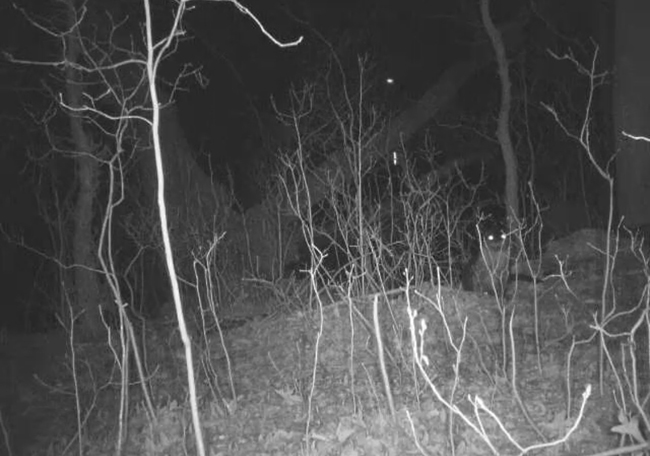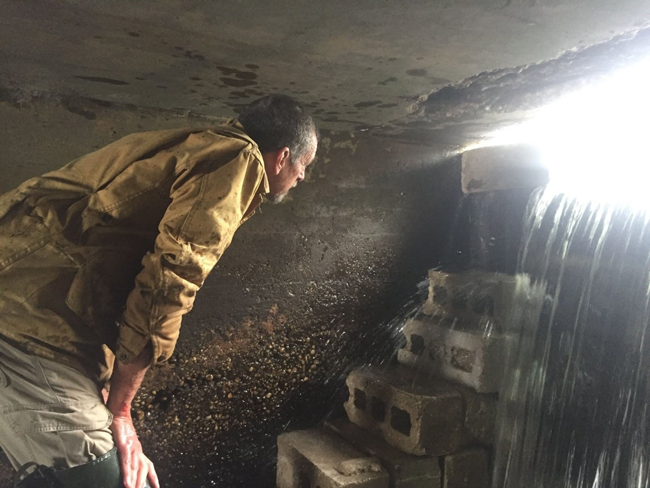
Conservation groups reported in April 2021 that river otters are thriving in Eastport’s Little Seatuck Creek. Well, now we have proof. Luke Ormand with the Town of Brookhaven captured nighttime moving images of a pair of the cute little guys scampering about along the creek. Both were clearly curious by the camera’s presence in the woods.
— Filed by Brian Harmon for GreaterLongIsland.com
Moriches, NY, May 6, 2021 - The river otter’s resurgence on Long Island is moving along quite swimmingly, the Seatuck Environmental Association reports.
Otters have taken up residence over the last year in Eastport’s Little Seatuck Creek, as well as in Carmans River in Brookhaven, according to Seatuck, an Islip-based outfit dedicated to conserving Long Island wildlife and the environment.
It’s great news — and not just for the otters.
River otters need clean water and an abundance of fish to thrive, so their increasing population is a positive indicator that the health of Long Island’s wetlands and surrounding habitat is headed in the right direction, experts said.
“The resurgence of our native river otter population is great news for our environment and speaks to the power of effective conservation strategies,” Seatuck Executive Director Enrico Nardone said. “Seatuck is committed to working to monitor, protect and preserve these delightfully charismatic creatures.”
Seatuck’s Long Island River Otter Project team have documented the expansion of the river otter’s distribution on Long Island. The river otters’ distribution on Long Island had been centered on the north shore and the Peconic Estuary. But last year, two otters were photographed on the Connetquot River.
The river otters once populated fresh and saltwater creeks, bays and ponds across Long Island. But unregulated fur trapping, water pollution and habitat loss changed all that.
The river otter’s populations were depleted dramatically on Long Island and across North America during the 1800s. Conservation laws have enabled their recovery, which has been slow but steady.

Mike Bottini helps build a stairway for Long Island river otters. Credit: Seatuck Environmental Association
“Long Island’s highly fragmented and developed landscape poses a challenge for otter recolonization in the form of roadkills, where otters are forced out of the water and onto roads in order to travel around dams,” said Mike Bottini, a Seatuck wildlife biologist who has tracked and studied river otters on Long Island since 2008.
A recent river otter roadkill incident in Eastport prompted Seatuck, with the help of Brookhaven Town staff, to construct a simple concrete block “stairway” for the otters to pass over the dam safely, avoiding the street above.
“It’s just one small solution in one area but as their population increases, we will need to find better and longer-lasting strategies to mitigate these occurrences,” Bottini said.
To engage the community and increase their monitoring capacity, Seatuck is partnering with Long Island Sound Study, New York Sea Grant, South Shore Estuary Reserve and Peconic Estuary Partnership, in an effort to train “community science volunteers” to locate and monitor river otter populations.
The results will be used to track the otters’ range, access the health of their habitat and prioritize areas for future restoration and protection.
More Info: Long Island Sound Study
Long Island Sound is one of the 28 nationally designated estuaries under the National Estuary Program (NEP), which was established by Congress in 1987 to improve the quality of Long Island Sound and other places where rivers meet the sea.
The Long Island Sound Study is a cooperative effort sponsored by the Environmental Protection Agency and the states of Connecticut and New York to restore and protect the Sound and its ecosystems. The restoration work is guided by a Comprehensive Conservation and Management Plan under four themes: Clean Waters and Healthy Watersheds; Thriving Habitats and Abundant Wildlife; Sustainable and Resilient Communities; and Sound Science and Management.
For more on what you can do to make a difference, click over to the "Get Involved" or "Stewardship" sections of the Long Island Sound Study's website. News on the Long Island Sound Study can also be found in New York Sea Grant's related archives.
If you would like to receive Long Island Sound Study's newsletter, please visit their site's homepage and sign up for the "e-news/print newsletter" under the "Stay Connected" box.
More Info: New York Sea Grant
New York Sea Grant (NYSG), a cooperative program of Cornell University
and the State University of New York (SUNY), is one of 34 university-based
programs under the National Oceanic and Atmospheric Administration’s
National Sea Grant College Program.
Since 1971, NYSG has represented a statewide network of integrated
research, education and extension services promoting coastal community
economic vitality, environmental sustainability and citizen awareness
and understanding about the State’s marine and Great Lakes resources.
Through NYSG’s efforts, the combined talents of university scientists
and extension specialists help develop and transfer science-based
information to many coastal user groups—businesses and industries,
federal, state and local government decision-makers and agency managers,
educators, the media and the interested public.
The program maintains Great Lakes offices at Cornell University, University at Buffalo, SUNY Oswego and the Wayne County Cooperative Extension office
in Newark. In the State's marine waters, NYSG has offices at Stony Brook
University in Long Island, Brooklyn College and Cornell Cooperative
Extension in NYC and Elmsford and Kingston in the Hudson Valley.
For updates on Sea Grant activities: www.nyseagrant.org has RSS, Facebook, Twitter, Instagram, and YouTube links. NYSG offers a free e-list sign up via www.nyseagrant.org/nycoastlines for its flagship publication, NY Coastlines/Currents, which is published quarterly.